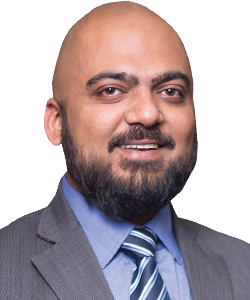India has one of the largest networks of water channels in the form of rivers, creeks, canals and backwaters, and it provides an effective and economical means of transport. Being environment friendly and inherently cost efficient because of lower construction, operation and maintenance costs, waterborne traffic is an attractive transportation option. The cost of moving one tonne of cargo through inland waterways is approximately one-third of that of railways and half of that of roads. India has more than 14,000km of navigable waterways capable of taking motorized craft.

Partner
HSA Advocates
In 1980, a National Transport Policy Committee determined that the sector was underutilized and inadequately funded. The committee recommended guidelines for declaring watercourses as national waterways. These required navigation by mechanically propelled vessels, the passage through, and service of the interests of more than one state, connections between hinterlands and major ports, and the connection of places not served by other modes of transport. The Inland Waterways Authority of India (IWAI) was established by the Inland Waterways Authority of India Act, 1985 (act), for regulating and developing inland waterways for shipping and navigation. The IWAI may establish infrastructure and facilities, levy fees and enter into contracts to discharge its functions. The Allahabad-Haldia stretch of the Ganga-Bhagirathi-Hooghly river was declared the first national waterway in 1986. The government added five national waterways between 1986 and 2015 and the National Waterways Act, 2016, declared another 106 national waterways.

Associate
HSA Advocates
In recognition of the role that the private sector can play, the Inland Water Transport Policy, 2001, prepared by the Ministry of Shipping supported and encouraged private participation. Apart from streamlining the regulatory framework, the government has provided viability gap funding, and has enabled the IWAI to enter into joint ventures adopting the build, operate and transfer model offering up to 40% equity for terminals and inland waterways. The sector can also receive 100% foreign direct investment through the automatic route.
Despite these benefits and incentives, the sector faces significant headwinds. The viability of projects in the sector is dependent on other modes of transport and the need for inland waterways terminals to be located near industrial hubs for efficient rail and road last-mile connectivity. Project financing of capital-intensive vessels is a challenge as there is no prescribed draft, and thus no standard for the minimum depth of watercourses required for the navigation of vessels. Additionally, the present regulatory framework limits the ability of private sector operators of inland waterway terminals to levy tariffs based on market conditions.
To overcome these drawbacks the government, over the past five years, allocated budget to this sector and increased financial contributions to the IWAI. The budget stressed the need to enhance port development through the Sagarmala Scheme and to develop inland waterways for cargo movement to ease congestion on road and rail networks, reduce the cost of transportation and cut oil import bills. In the last budget, the Jal Vikas Marg project on National Waterway-1, the fairway between Varanasi and Haldia, was said to be nearing completion.
The government also proposed the regulation of multi-modal transport and a national logistics policy, which will benefit inland waterways through a transport mix, thus encouraging consolidated cargo movements.
The World Bank recently signed a loan agreement of US$88 million to help modernize Assam’s passenger ferry sector. This will help Assam to improve the passenger ferry infrastructure and strengthen the capacity of the bodies running inland water transport. The World Bank, through the International Finance Corporation, has successfully helped the IWAI enter into an arrangement for the operation and management of terminals at Kolkata and Patna, which were placed in the charge of an operator from Bangladesh. The state government of Goa plans to revive inland waterway passenger services connecting rural areas to cities in the coastal state, which will be fully funded by the IWAI.
Clearly, the benefits of developing robust inland waterways outweigh the drawbacks. To encourage greater private sector participation, the government should consider the introduction of robust public-private partnership programmes. While noteworthy steps have been taken towards the development of this sector, there is much more that can be done to ensure that inland waterways emerge as a viable transportation platform.
Akshay Malhotra is a partner and Ishita Gupta is an associate at HSA Advocates.
HSA Advocates
81/1, Adchini, Sri Aurobindo Marg
New Delhi – 110 017
India
Construction House 5/F Walchand Hirachand Marg, Ballard Estate
Mumbai – 400 001
India
Contact details
Tel: +91 11 6638 7000 Fax: +91 11 6638 7099
Tel: +91 22 4340 0400 Fax: +91 22 4340 0444
Email: mail@hsalegal.com
Website: www.hsalegal.com































